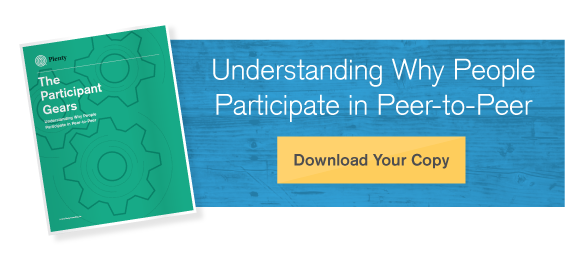What Construction Can Teach You About Measuring Impact
Last week, I co-presented my first webinar as a member of the Plenty team. To break the ice and calm my nerves, I lead with a few of my favorite jokes about the Windy City: In Chicago, there are only two seasons – winter and construction. As lame as that anecdote is, it has proven to be true: it’s finally summer, and a large construction crew has blown apart my street to lay a new gas line. And while I assume this project to be a necessary evil of city life, it struck me recently that I would be more open to the noise, detours, and water shut-offs if I knew why the new gas line was necessary, and what it would add to the neighborhood.
 Demonstrating impact is a critical component of many processes. On the business development team at Plenty, for example, I’ve been deeply entrenched in impact measurement while preparing case studies that demonstrate our firm’s own influence on the success of our clients’. Whether selling consulting services, applying for a grant, or recruiting peer-to-peer fundraisers, you must be able to demonstrate mission impact.
Demonstrating impact is a critical component of many processes. On the business development team at Plenty, for example, I’ve been deeply entrenched in impact measurement while preparing case studies that demonstrate our firm’s own influence on the success of our clients’. Whether selling consulting services, applying for a grant, or recruiting peer-to-peer fundraisers, you must be able to demonstrate mission impact.
There are countless academic papers exploring frameworks and formulas for achieving this goal, and countless firms (like ours) that apply sophisticated data analysis to solve impact-related problems. The good news, though, is that you can begin articulating and demonstrating mission impact by answering a few simple questions.
What is your organization’s mission?
It seems like an easy question, but as we’ve said time and time again, developing an effective mission statement can be a deceivingly complicated process. Your mission statement must include not only the need you’re trying to fill, but also the services you’re providing to impacted communities to fill that need. For that reason, it is critical that your development committee and program committee are synched up on the overarching objective. If you disagree, it’s time to cast a critical eye on whether funds raised actually fuel programs that address the organization’s mission, and if they don’t, to recalibrate accordingly. Once you’ve established and articulated your mission, you can begin to consider the ways in which your organization works to fulfill it.
What makes your organization different?
Competition is the reality for any sector, including the nonprofit space. Whether you’re a hospital foundation or a nonprofit battling a rare disease – you’re likely fighting for the same cause as other organizations. This is a beautiful thing: now more than ever before, large numbers of people are activating to bring about change in the world, and we as leaders in the nonprofit space should support that movement.
This widespread activation does, however, mean that your organization must understand your constituents’ cause connection, expectations, and needs, and weave them into the impact narrative. You must demonstrate how you make a difference differently. Maybe fundraising dollars fund preventative screenings instead of post-diagnosis treatment? Perhaps you provide scholarships to underprivileged students instead of after-school care? Find the unique ways that your organization’s initiatives fit into the industry fray and leverage them in branding, messaging, and fundraising asks.
Where’s the money going?Here’s the million-dollar question (or in many cases, the billion-dollar question). Your constituents’ tolerance for fakery has decreased, and their expectations for transparency have increased. Much of that comes from glaring headlines highlighting poorly managed, or downright fraudulent, organizations. But the high accountability standard makes even more sense considering that we live in the Wikileaks era – a time when we both revere and fear big data. Your constituents simply expect to know what you do with your fundraising dollars and, further, they want to be able to choose where their money goes.
Provide quantifiable, visual impact statements whenever possible (infographics are great for this). Include macro-level statements like, “your participation in the Life-Saver Walk in 2015 saved 1,000 lives through life-saving vaccinations”, as well as smaller unit statements such as, “$50 provides a preventative screening for heart disease.” This provides a frame of reference not only for an individual gift, but also for the program as a whole.
Whether asking a constituent for a $5 donation or pitching a major corporate sponsorship, measuring impact will equip you to make asks that pack a punch – asks that end in one word, “yes!” And even if your ask isn’t for an investment equivalent to a major disruption like a construction project, new and existing constituents will choose to raise funds for you simply because they understand their role in pulling the change lever, and why it’s critical that they take action to advance your mission specifically.
Impact measurement is an important tool for solidifying your constituent's continued support and participation in your campaigns. Discover the three biggest factors driving your campaign's recruitment and retention results in our latest e-book "The Participant Gears." Download your copy below!
Share this
You May Also Like
These Related Stories

Three Ways To Cultivate Your Peer-to-Peer Community

How To Effectively Communicate Your Impact




Comments (2)